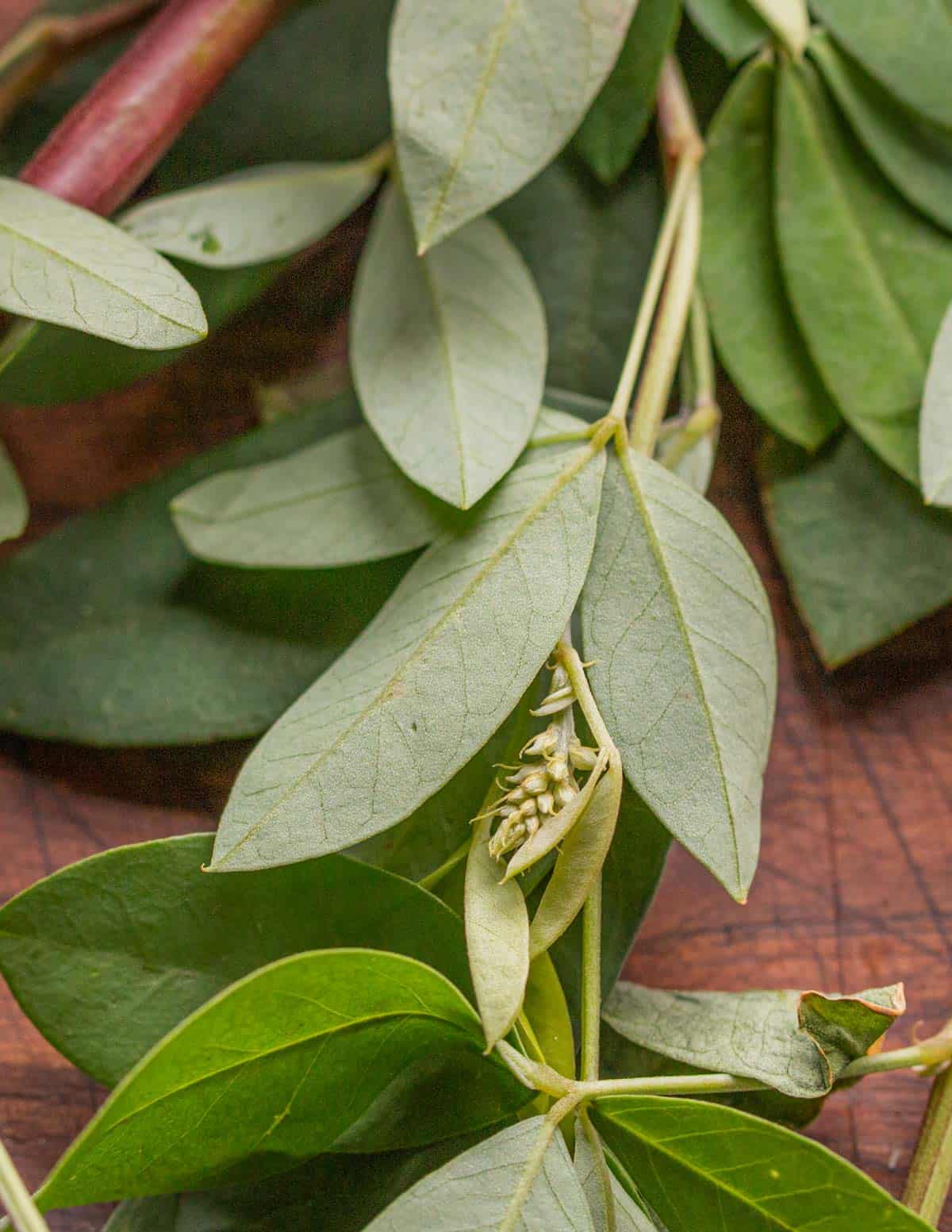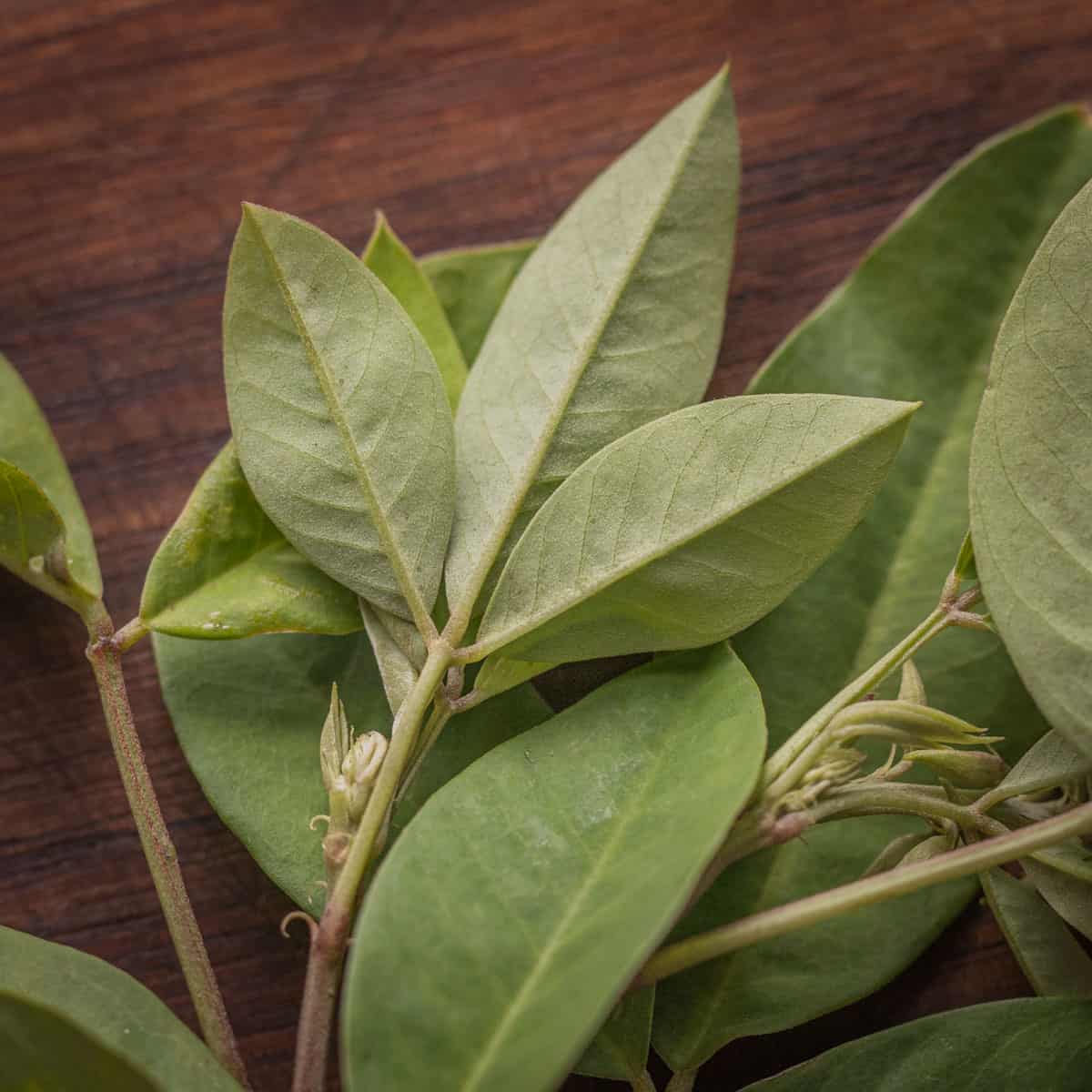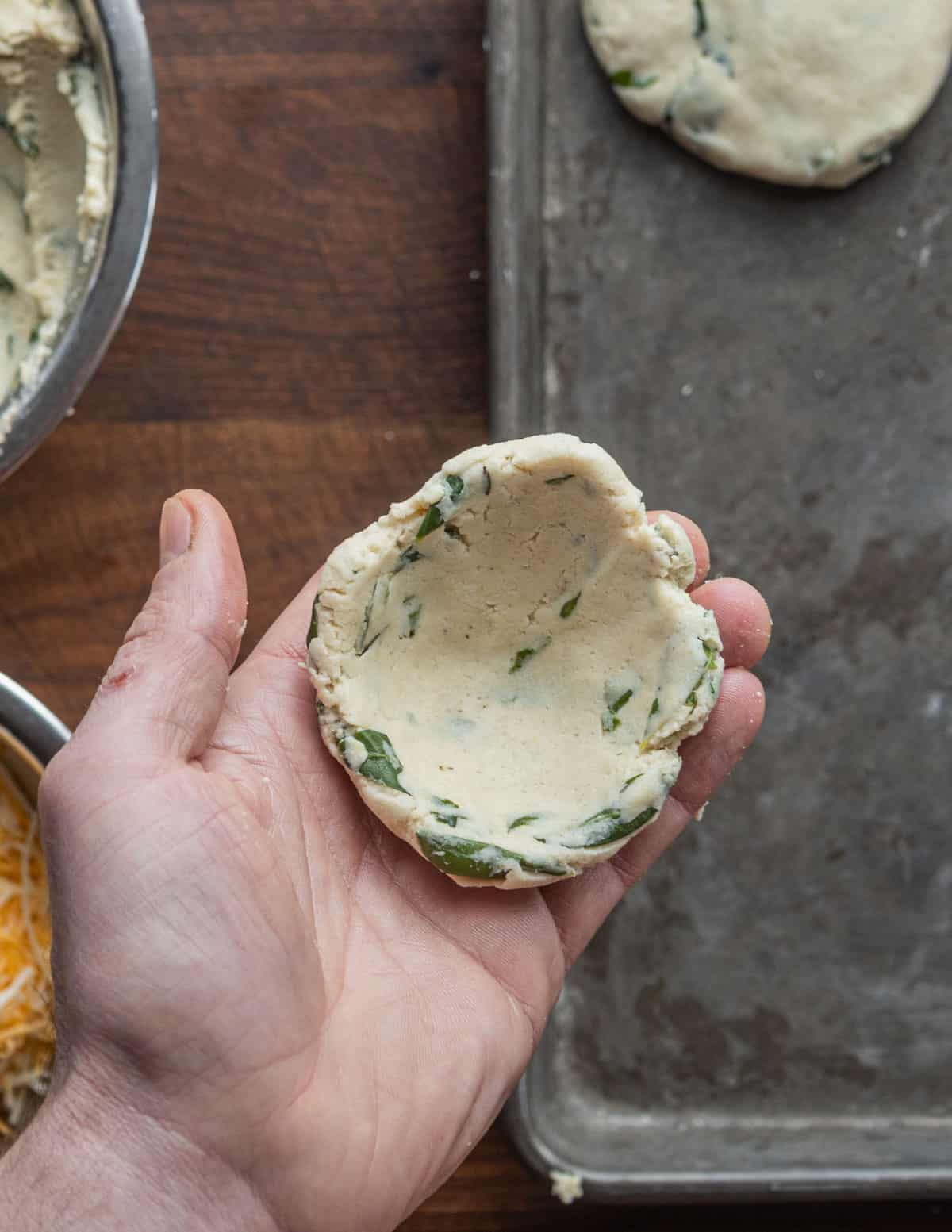Ask someone from El Salvador or Guatemala about chipilín and you'll get an earful of nostalgia about how their abuelitas (grandmothers) use it in the kitchen. Th leaves of this wild legume are prized in Central America, especially in Salvadorean and Guatemalan cuisine. Today I'll share a little background on it, and how to use it in the kitchen in a few special traditional recipes.

What is Chipilin?
Chipilin (Crotolaria longirostrata) is a leguminous plant in the bean or Fabaceae family native to Mexico and Central America. Something between an herb and a leafy green, you might say chipilin tastes like spinach crossed with clover or green beans. Some accounts say it has a sour flavor but I've never noticed that.

It's easy to see why this plant could become a staple crop. Like many of the other 300 quelites (wild edible plants), its nutrient-dense leaves are perennial and easy to harvest. Cooked, the leaves are tender, but also hold their shape after hours of cooking.
The mild, beany flavor is unique, yet subtle-everything you could ever want in an edible plant.

The shoots or leaves are always cooked. They're a well-known ingredient in tamales, pupusas, omelets and soups. An unusual recipe is a licuado, or a smoothie. I like it made with hot chicken stock thickened with a little potato and a dash of lime.

Fresh and frozen chipilin leaves can be purchased at Asian and Mexican grocers if you're lucky. At around $6-8 for 4 oz frozen, it's relatively expensive. Occasionally I see the leaves sold in jars/canned.

Considered a perennial vegetable in it's native habitat, It's listed as an noxious weed in the Continental United States, and banned in Australia and Hawaii.
The invasive status is probably compounded by the fact that besides being prolific seeders, it, and other relatives in the genus Crotolaria (also known as rattlepods) are poisonous to cattle. As with other legumes like alfalfa, it's also a nitrogen fixer and good for soil fertility.

It's been called one of the most important edible leaves in the world, and a number of different species in the genus are consumed as a food. Only the leaves, shoots and flowers are eaten and the roots and seeds are said to be toxic. Besides C. longostrata, there's also C. tetragona consumed in Northeast India, and C. brevidens eaten in East Africa.
Pupusas de Chipilin
I was introduced to the plant when my co-worker's girlfriend from El Salvador would bring pupusas de chipilin to work for his lunch. The little cheese-stuffed tortillas were so popular they were like a form of currency. I remember seeing three pupusas traded for a duck breast one day.

They're easy to make, and great for cooking with children and groups of people. Here's how to make them.





A Simple Chipilin Tamale Recipe
Tamales are very traditional, but you can add the leaves to just about anything made with masa harina. The leaves add a subtle flavor and there's a number of regional variations to try.

A special Guatemalan version called chuchitos de chipillin are stuffed with chicken or pork and served with a recado, or red sauce.

In the recipe below I stuff them with queso chihuahua, but the masa can simply be cooked as small chipilin tamales, or tamalitos. Here's how to make them.

First you remove the leaves from the plant. They strip off the branch just like thyme. After that they can be frozen raw or cooked.









Related Posts
Tamales de Chipilín
Equipment
- 1 Large pot for steaming
- 12 5 inch by 10 inch pieces of banana leaf or corn husks. ask for "hojas de platano" at your local market
- Aluminum foil as needed, optional
Ingredients
- 3 cups Masa harina
- 3.5 cups Meat or chicken stock, hot use water in a pinch
- 1.5 teaspoons Kosher salt
- 8 oz Queso Oaxaca or Chihuahua or another melting cheese like pepperjack or mozzarella.
- 4 oz Pork lard or unsalted butter (½ cup) melted
- 3 oz Chipilin leaves (roughly 3 cups) fresh or frozen
Instructions
- Combine the masa, lard or butter, salt, chicken stock and chipilin leaves in a bowl. Cover the bowl with cling film and rest for 20 minutes.
- Lay out a piece of banana leaf on a square of aluminum foil.
- Put down a 2.5 oz spoonful of masa, making a dent in the center.
- Put a .5 oz rectangle of cheese in the center, then roll up the tamal in the leaf with the aluminum foil. Try to make sure the masa forms a seal around the cheese.
- Put the tamales in a steamer and cook for 2 hours, then allow to cool.


Rey
Recipes and info look good but please correct that El Salvador and Guatemala is in Central America, very different from South America.
Amy
Great! While I have no hope of getting chipilin here on my little WestCoast Island, I’ve been looking for masa/tamale recipes and going to do this with nettles instead. Also might try seaweed wrap (but will do corn husk first)
Alan Bergo
Thanks Amy. One of the first things I thought of was how many different wild greens I could add to masa just like chipilin. Lambsquarters obviosuly, but I totally forgot about ortigas/nettles. I saw one version on a YT channel where they pureed the plants in the liquid for the dough. I know it would come out looking swampy but I might have to try it.
Amy
Interesting idea (but yeah would t look pretty). I’m going to do a nettle goat cheese filling in the pupas, like a ravioli filling. Cultural fusion! (Or confusion??)
Alan Bergo
Oh no it sounds great. Hank Shaw was just telling me about the use of goat cheese in Northern Mexico. Ortigas / nettles are also widely used so I don't think that's strange at all. Sounds really good.
Noah
Hi!
Out of curiosity---what do you think the percentage of plants we forage on a regular basis are considered 'weeds' is? I think up to 80%!
Alan Bergo
Hey Noah, I'd assume something comparable to that. It's tricky to nail down a specific percentage, but the vast majority of plants I pick most people would call weeds. Part of the difficulty of categorization is cultural, the other part is the question "is it native or not". Either way, it's a lot.
Noah
Haha. Thanks!
Alan Bergo
You bet.